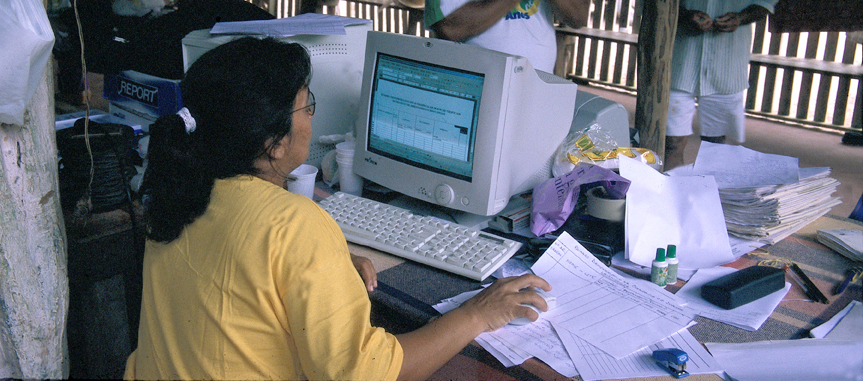
Photo Credit: Julio Pantoja / World Bank
Thanks to Annette Brown’s brilliant post last month, we now know what big data and data analytics are. Fantastic! The next question is: so what? Does having more data, and information from that data, mean more impact?
I’m lucky enough to be part of the Research Utilization Team at FHI 360, where it’s my job to ask (and try to answer) these kinds of questions. The goal of research utilization (also known by many other names) is to use research – and by implication data – to make a real difference, by providing the right information, to the right people, at the right time, in ways they can understand and be supported over time to use.
So, without further ado, I present to you four practical tips for turning BIG data into BIG practice.
1 Begin with the end in mind. Start by asking how: How could this data make an impact? How will it eventually be used – for example, to change a policy, to improve a program, or to highlight service gaps? And, how can you engage the end users of this data before it’s collected or analyzed to ensure that in the end it’s the most useful to them? Considering these types of questions before analyzing big data increases the likelihood that the subsequent information is useful and used. These how questions can guide and prevent you from getting bogged down, or losing your way, when wading through a colossal trove of data. UNDP’s guide on data innovation for development is a great place to start; it provides practical guidance on using big data for development, from defining the problem to developing a “data wish list.”
2 Be a data opportunist. Combining big data and small data is as intuitive as combining peanut butter with jelly. Rather than using big and small data in siloes, analyzing smaller, familiar data (like household surveys) together with big data (like satellite imagery) can enrich the information produced. Read up on the different types of big data (e.g., the big data ecosystem), and start looking for opportunities to strategically combine big and small data. You may already have access to big data without even realizing it, such as analytics from social media campaigns or user data from a mobile money program.
3 Beautify the results. A crucial step to effectively engaging decision makers to use the information from your analyzed data is to present it in a way that matches the capacity, interests, and needs of your target audience. Data visualization is the key to doing so. In his engaging Ted Talk, “data viz” expert David McCandless describes data visualization as “Visualizing information, so that we can see the patterns and connections that matter. Then designing that information so it makes more sense, or it tells a story, or allows us to focus only on the information that’s important. Failing that, visualized information can just look really cool.” In other words, data visualization is not just an analysis tool, but a powerful way to help your target audience connect with and understand the story your data is telling. Chart choosers (like this periodic table and OECD’s data viz lab) can help you narrow your storyline and visualize your data in a way that tells it best. Also, check out Stephanie Evergreen’s blog for an entertaining exploration on data visualization.
4 Make uptake count. In his blog post Jed Cawthorne proposes (from a business perspective) that knowledge management and big data analytics might be a seemingly strange but perfect pairing. Simply put, one definition (see here) of knowledge management is “knowledge that is the systematic process by which knowledge needed… is created, captured, shared, and leveraged.” When combined with the actionable insights provided by big data, strategic knowledge management can lead to institutionalization of evidence-based practices. For more information on leveraging big data for sustainable development see the UN resource “A World that Counts,” which compels us to build capacity, be open and transparent with data and data sources, and provide timely, relevant data to implementers and decision makers.
Using big data can make a big impact in development, but it’s up to you to find practical answers to the “so what?” to make sustainable changes that improve lives. I leave you to ponder a few parting words from this UN Global Pulse White Paper: “It is important to recognise that Big Data and real-time analytics are no modern panacea for age-old development challenges. That said, the diffusion of data science to the realm of international development nevertheless constitutes a genuine opportunity to bring powerful new tools to the fight against poverty, hunger and disease.”


